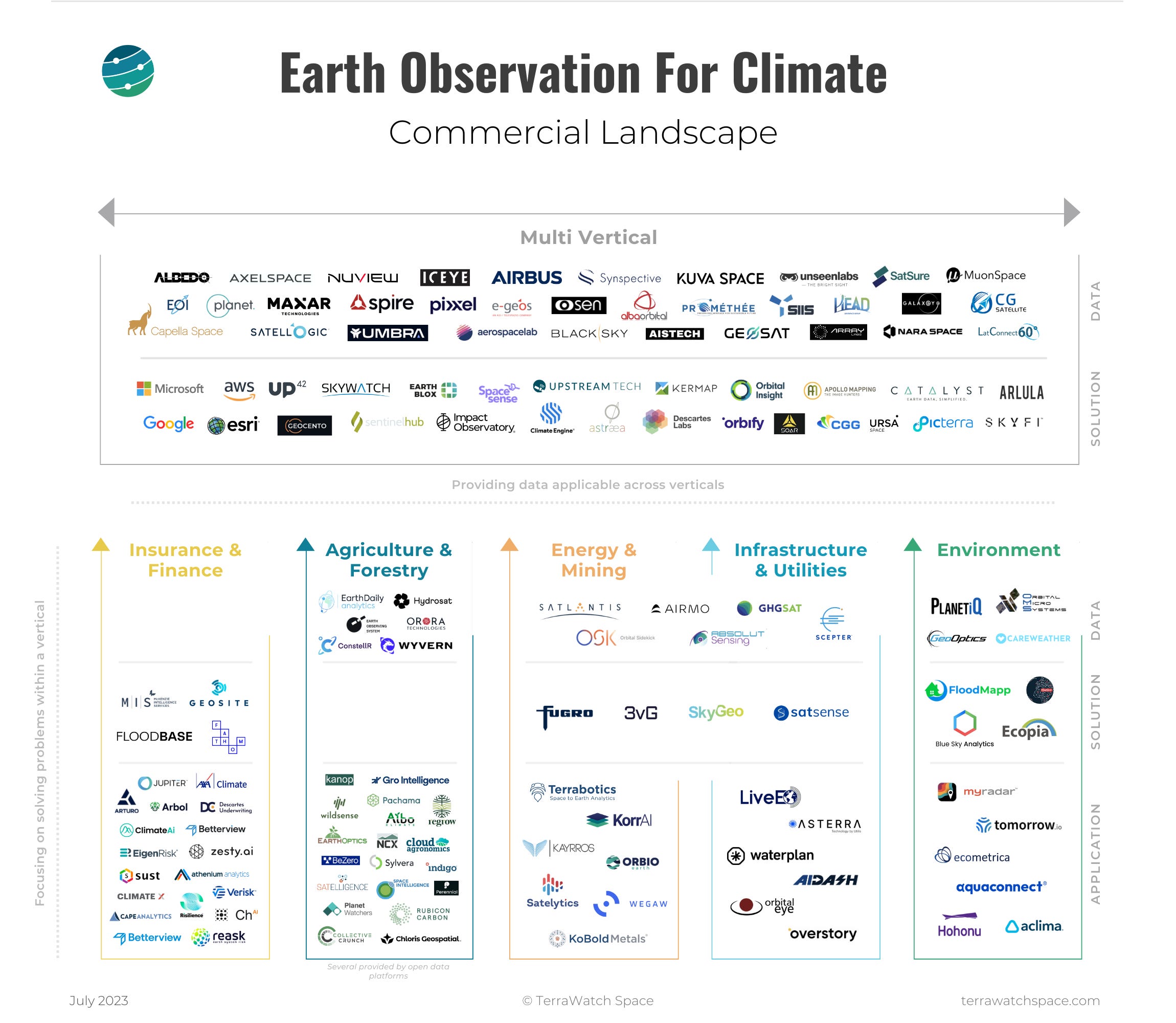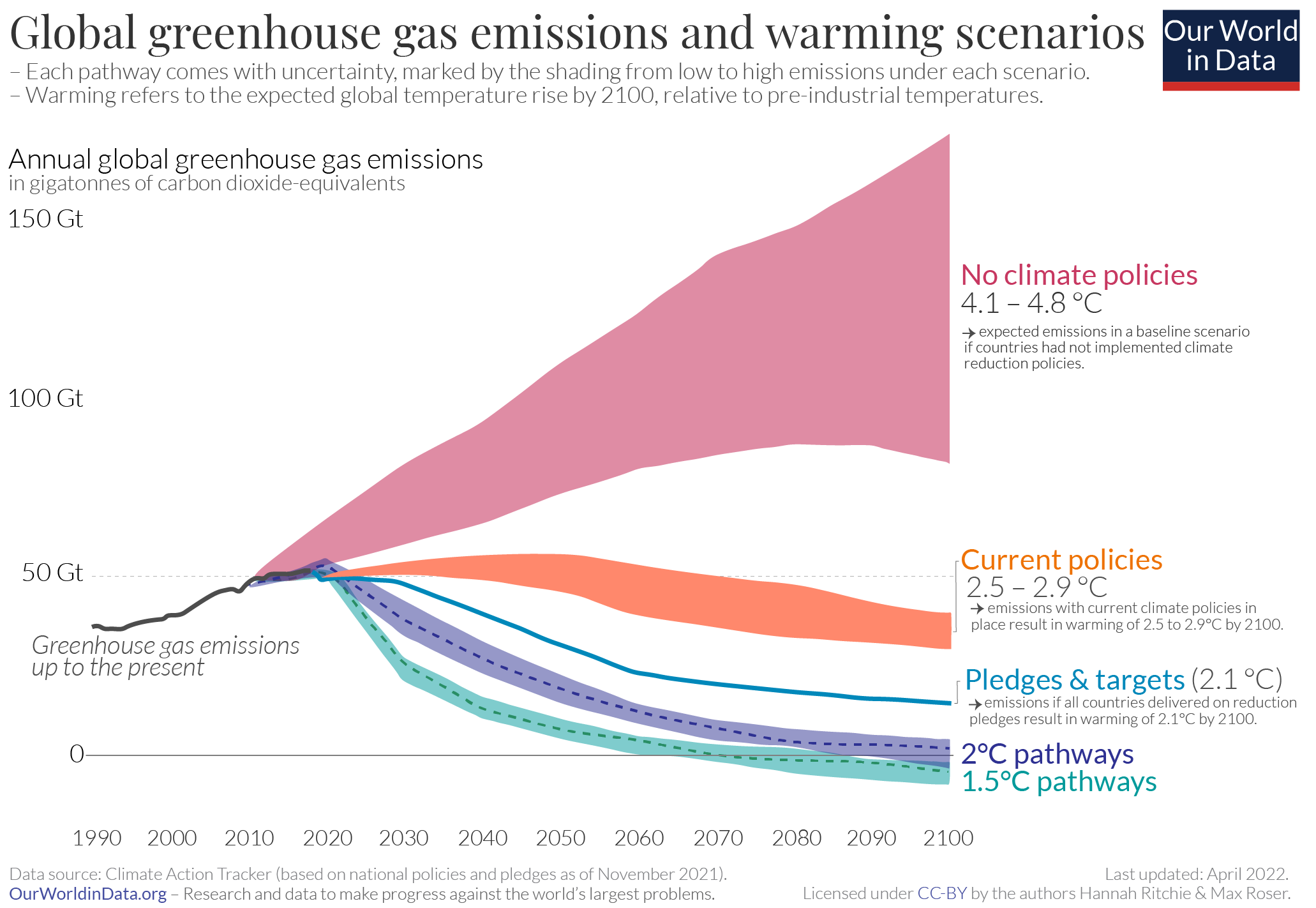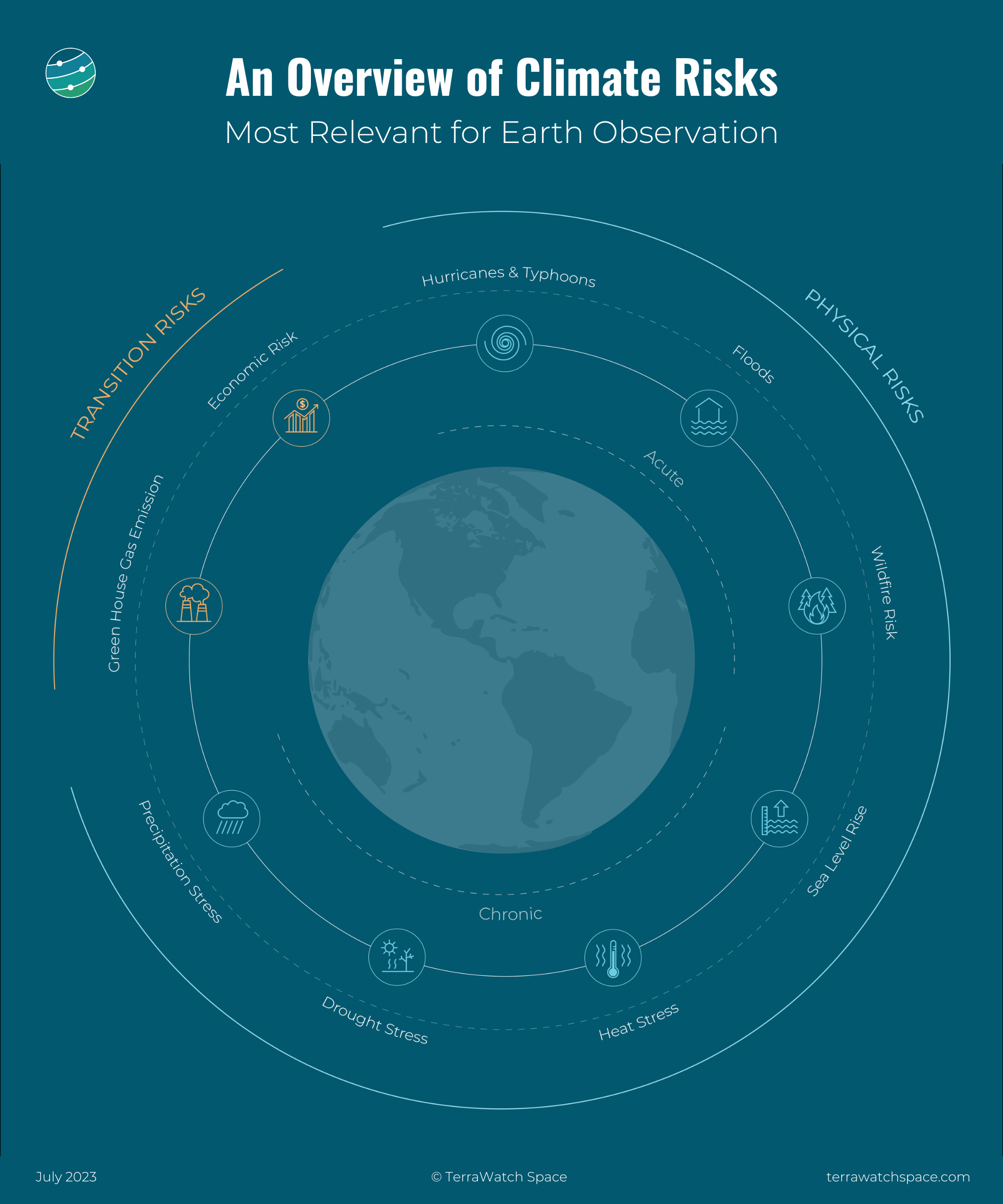To my premium subscribers, thank you for your support. It has given me enough financial cushion to take time to write deep-dive briefings such as this one while also letting me continue to write the weekly newsletter. The next planned deep dives are Edge Computing for EO (in August), EO for Carbon Monitoring (in September) and EO for Emissions Monitoring (in October).
For those of you who are not yet paid subscribers, this is a short preview if you would like to read more, please upgrade your subscription. In any case, you should continue to receive the weekly newsletter on Mondays, as usual.
Preamble
This deep dive is an attempt to demystify the climate risk segment within the climate tech space, mainly focusing on the role of Earth observation (EO), the emerging commercial landscape and the outlook for this segment. The aim is not to provide a comprehensive report on climate risk itself, but instead on the importance of EO for measuring, reporting and responding to climate risks.
This piece does not cover every climate risk in detail, nor delves into the climate insurance segment, but rather provides a high-level introduction to the subject. Deep dives are planned for later in the year to go deeper into insurance, emissions, supply chain risk etc. There are some suggested recommendations towards the end of the piece, in case you would like to go deeper into climate risk, in general, and the use of EO. As always, let me know if you have feedback. I am sure this is the first of more editions to come on this subject.
Here is what we have in store for this briefing:
Optional Pre-Read
Context: What is Climate Risk?
Types of Risks: Physical Risk vs Transition Risk
Regulations and Standards for Climate Risk
Earth Observation for Climate Risk
The EO for Climate Risk Value Chain
An Overview of the Landscape
Outlook: Measuring, Reporting and Responding to Climate Risk, using EO
The Black-Box Problem
Optional Pre-Read: The State of Earth Observation for Climate
If you are new to Earth observation or want to understand the role of EO for climate, in general, I recommend you start with my recently published deep dive, “The State of EO for Climate”, before you go deeper into this piece.
Deep Dives
The State of Earth Observation for Climate: 2023 Edition
Aravind • Jul 26, 2023

Note #1: This is an attempt at providing an overview of the state of the use of Earth observation (EO) for climate, in the commercial context. You may think of this piece as a follow-up edition to la…
Read full story →
Context: What is Climate Risk?
Climate risks are simply the risks associated with climate change for individuals, businesses and governments. As humanity tries to build a carbon-neutral economy, attempts to slowly move towards its net-zero goals and strives to mitigate and adapt to climate change, it needs to deal with the risks of those actions. Like most things in life, nothing comes easy, and we are obviously left to deal with the consequences of our anthropogenic actions. Depending on how we deal with climate change, the intensity and variety of climate risks may differ.

In most cases, these risks are often financial in nature for all stakeholders. So, climate risks can effectively be categorised as financial risks. For the purpose of this piece, we will be focusing on the climate risks for businesses, and the role of EO in measuring, reporting and responding to those risks.
Types of Risks: Physical Risk vs Transition Risk
The risks associated with climate change are typically divided into two categories: physical and transition risks. Despite the fact that they are categorised into two groups, all the climate-driven risks are interconnected. The earlier we take action (i.e. reduce our dependence on fossil fuels and protect biodiversity) managing the transition risks, the more manageable the physical risks might be. The longer we wait, the worse both risks become for everyone.
An overview of the risks that are particularly relevant to EO, is given in the figure below, followed by a brief description of the two categories.

Physical Risks
These are the more evident and less easily understandable risks of climate change, referring to the perils of the manifestation of climate damage - in the acute form through floods, wildfires, hurricanes etc. and in the chronic form through sea-level rise, heat stress, drought stress and precipitation stress. Essentially, physical risks are the effects of climate change on the natural and built environments on the planet.
Transition Risks
These are the less evident and more easily understandable risks of climate change, that are related to the process of transitioning away from fossil fuels and towards a low-carbon economy. Some countries, some industries and some people might be subject to more transition risks than others, but typically these include those that are associated with actions that need to be taken to reduce greenhouse gas (GHG) emissions as well as the microeconomic & macroeconomic implications of that shift.






